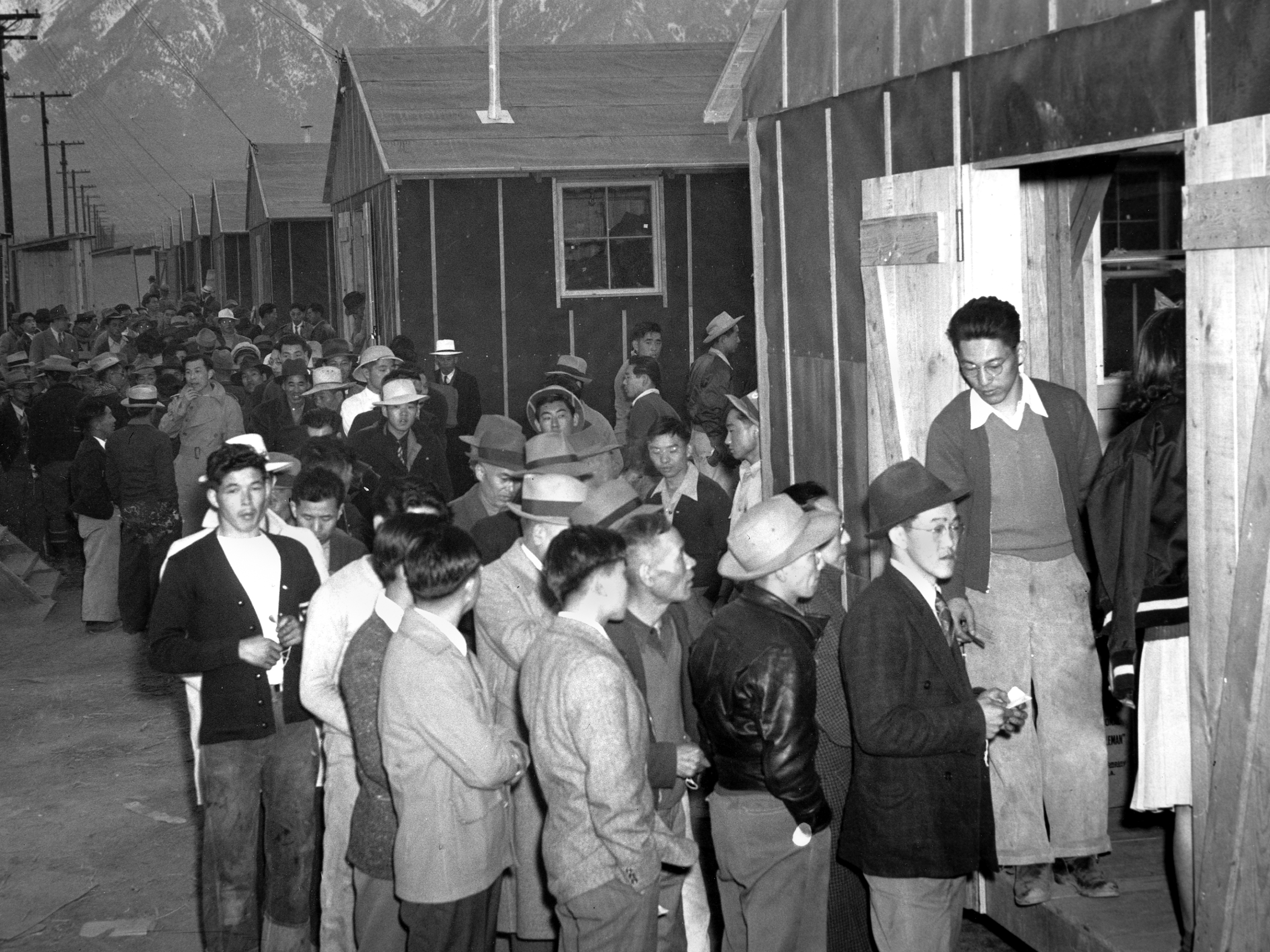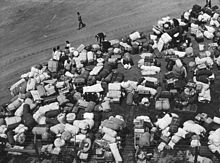Religious rights at Japanese-American internment camps were one of the first victims of the human rights abuses. Pathfinder - Japanese American Internment Camps - Summary - Especially in the age of the internet it is possible to access and share in a classroom setting many amazing historical resources such as interviews sound clips propaganda films letters etc.
 The Incarceration Of Japanese Americans During World War Ii Atomic Heritage Foundation
The Incarceration Of Japanese Americans During World War Ii Atomic Heritage Foundation
Men were separated from women and children.

Japanese internment camps summary. Japanese Americans Internment Camps. During World War II the American government put Japanese-Americans in internment camps fearing they might be loyal to Japan are an Americanized version of concentration camps. This page will focus primarily on two internment camps.
The executive act was signed by Franklin Roosevelt on the second of February in 1942. The book discusses how Japanese Americans were put into internment camps after Pearl Harbor was attacked by the Japanese in WWII. A True Story Of Japanese American Experience Of During And After The World War II Internment.
Although internment camps were unfair to Japanese Americans the US used the security of the country as a reason for the development of these camps. Claim- For years people have argued over whether Japanese Internment camps interment means putting a person in prison or other kind of detention generally in wartime. Armed guards patrolled the perimeter and were instructed to shoot anyone attempting to leave.
Hearing of FBI searches from friends the family collects and burns all their Japanese possessions. Childrens History Theme. Displacement Evils of racism Hazards of passing judgment Injustice Patriotism positive side or complications Point-of-View.
It describes what their lives were like inside the camps and what happened to them after the war. Japanese Internment Camps SUMMARY Thesis. Beginning in May 1942 the War Department transferred the Japanese Americans to 10 War Relocation Authority WRA relocation centers.
Starting in 1944 older boys were interned in either mens camps or separate boys camps. Houston Jeanne Wakatsuki and James Houston. Deborah Kent Media Type.
In the wake of the Pearl Harbor bombings in World War II about 110000 Japanese Americans were held in Internment camps for no reason beside the fact they were of Japanese decent. In limbo for several months they learn they must leave their homes in May of 1942. Tule Lake and Manzanar that were located in California.
The family prepares for their exclusion leaving their farm with a local sheriff to manage while one. The Tragic History of the Japanese-American Internment Camps book Creators. At the internment camps the practice of the Shinto religion was outright outlawed and Buddhism was severely restricted by the ban on Japanese written materials which was necessary for worship Summary.
The barracks consisted of tar paper over two-by-sixes and no insulation. Central Utah Utah Colorado River Arizona Gila River Arizona Granada Colorado Heart Mountain Wyoming Jerome Arkansas Manzanar California Minidoka Idaho Rohwer Arkansas and Tule Lake California. December 7 1941 there was an attack by the Japanese on Pearl Harbor a naval base in IN.
During the World War II in the former Netherlands East Indies from March 1942 to August 1945 about 100000 Dutch civilians were imprisoned by the Japanese in internment camps. There was a total of ten war relocation centers built during World War II made to imprison Japanese-Americans across seven states. San Francisco Book Company and Houghton Mifflin Book 1973.
Grades 7-8 Reading Level. The internment camps were surrounded by barbed wire and guard towers. Japanese internment camps were the sites of the forced relocation and incarceration of people of Japanese ancestry in the Western United States during the Second World War and established in direct response to the Pearl Harbor attackThey remain arguably the most notorious example of war-time hysteria driving public policy decisions based on paranoia and fear-mongering than fact-based.
Following the attack the head of each Japanese American household had to follow Executive Order No. Life in a Japanese American. The topic of Japanese-American Internment is relevant to social studies education because it explores historical events changes affecting society in the US focuses on disenfranchised populations includes artifacts and primary sources such as reports from government officials and touches on the lack of rights of the Japanese-Americans during World War 2.
 Japanese Internment Camps Wwii Life Conditions History
Japanese Internment Camps Wwii Life Conditions History
 Japanese Internment Camps Wwii Life Conditions History
Japanese Internment Camps Wwii Life Conditions History

 Teaching Japanese American Internment Using Primary Resources The New York Times
Teaching Japanese American Internment Using Primary Resources The New York Times
 At Least During The Internment Are Words I Thought I D Never Utter Foreign Policy
At Least During The Internment Are Words I Thought I D Never Utter Foreign Policy
 What Japanese American Internment Camps And Family Separations Have In Common Quartz
What Japanese American Internment Camps And Family Separations Have In Common Quartz
 At 92 A Japanese American Reflects On The Lessons Of Internment Camps Npr
At 92 A Japanese American Reflects On The Lessons Of Internment Camps Npr

